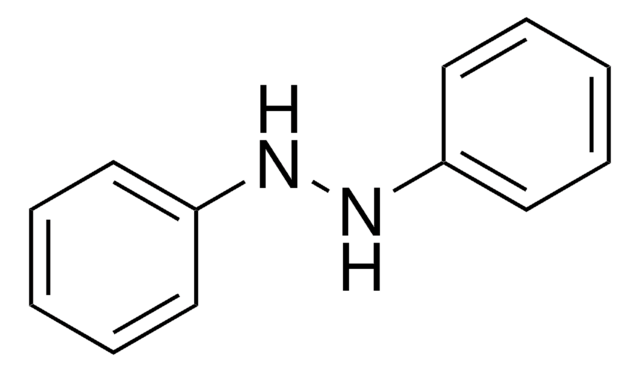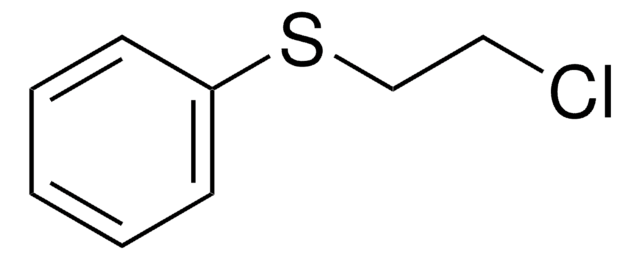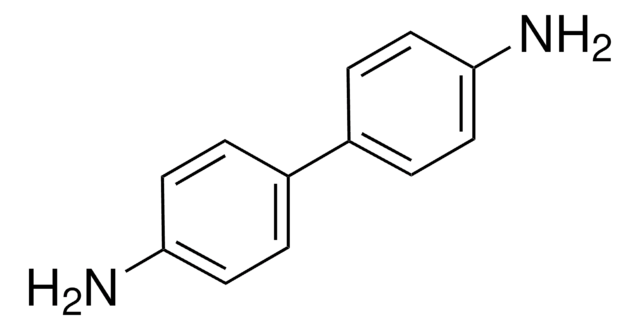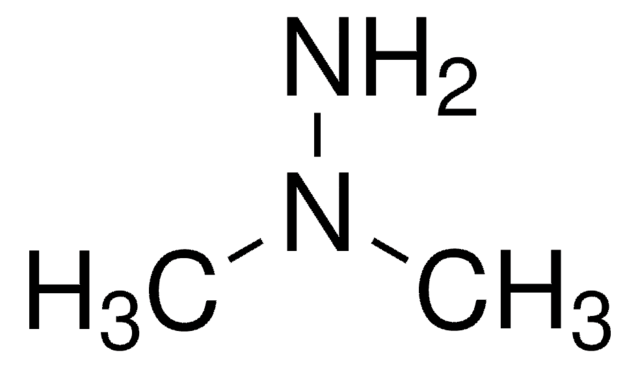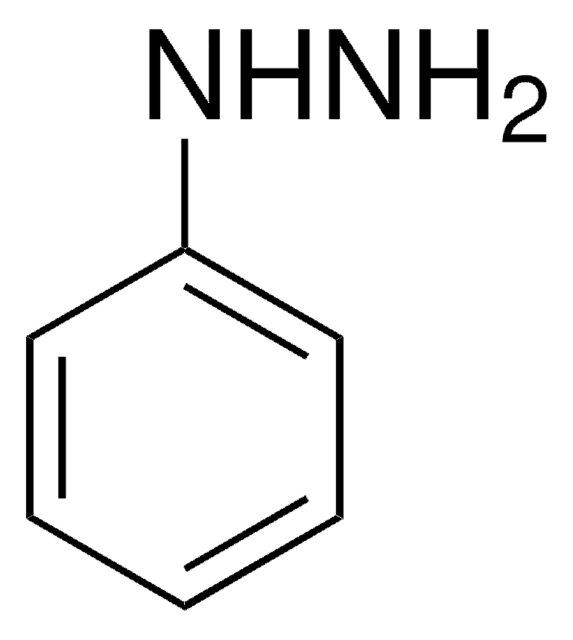442232-U
1,2-Diphenylhydrazine
analytical standard, ampule of 100 mg
동의어(들):
Hydrazobenzene, N,N′-Diphenylhydrazine, N,N′-Bianiline, NSC 3510
About This Item
추천 제품
Grade
analytical standard
CofA
current certificate can be downloaded
포장
ampule of 100 mg
기술
HPLC: suitable
gas chromatography (GC): suitable
mp
123-126 °C (lit.)
응용 분야
cleaning products
cosmetics
environmental
food and beverages
personal care
형식
neat
저장 온도
2-30°C
SMILES string
N(Nc1ccccc1)c2ccccc2
InChI
1S/C12H12N2/c1-3-7-11(8-4-1)13-14-12-9-5-2-6-10-12/h1-10,13-14H
InChI key
YBQZXXMEJHZYMB-UHFFFAOYSA-N
유사한 제품을 찾으십니까? 방문 제품 비교 안내
일반 설명
애플리케이션
- Insertion reactions with organometallic tantalum complexes
- Reduction reactions catalyzed by titanium(III) trichloride yielding amines
- Studying the mechanism of hydrazobenzene rearrangement
- Reaction with N-heterocyclic stable silylene
- Synthesis of dimanganese amide hydrazide cluster complexes
- Iron-mediated hydrazine reductions yielding iron arylimide cubanes
신호어
Danger
유해 및 위험 성명서
Hazard Classifications
Acute Tox. 4 Oral - Aquatic Acute 1 - Aquatic Chronic 1 - Carc. 1B
Storage Class Code
6.1D - Non-combustible acute toxic Cat.3 / toxic hazardous materials or hazardous materials causing chronic effects
WGK
WGK 3
Flash Point (°F)
Not applicable
Flash Point (°C)
Not applicable
개인 보호 장비
dust mask type N95 (US), Eyeshields, Gloves, type P2 (EN 143) respirator cartridges
자사의 과학자팀은 생명 과학, 재료 과학, 화학 합성, 크로마토그래피, 분석 및 기타 많은 영역을 포함한 모든 과학 분야에 경험이 있습니다..
고객지원팀으로 연락바랍니다.